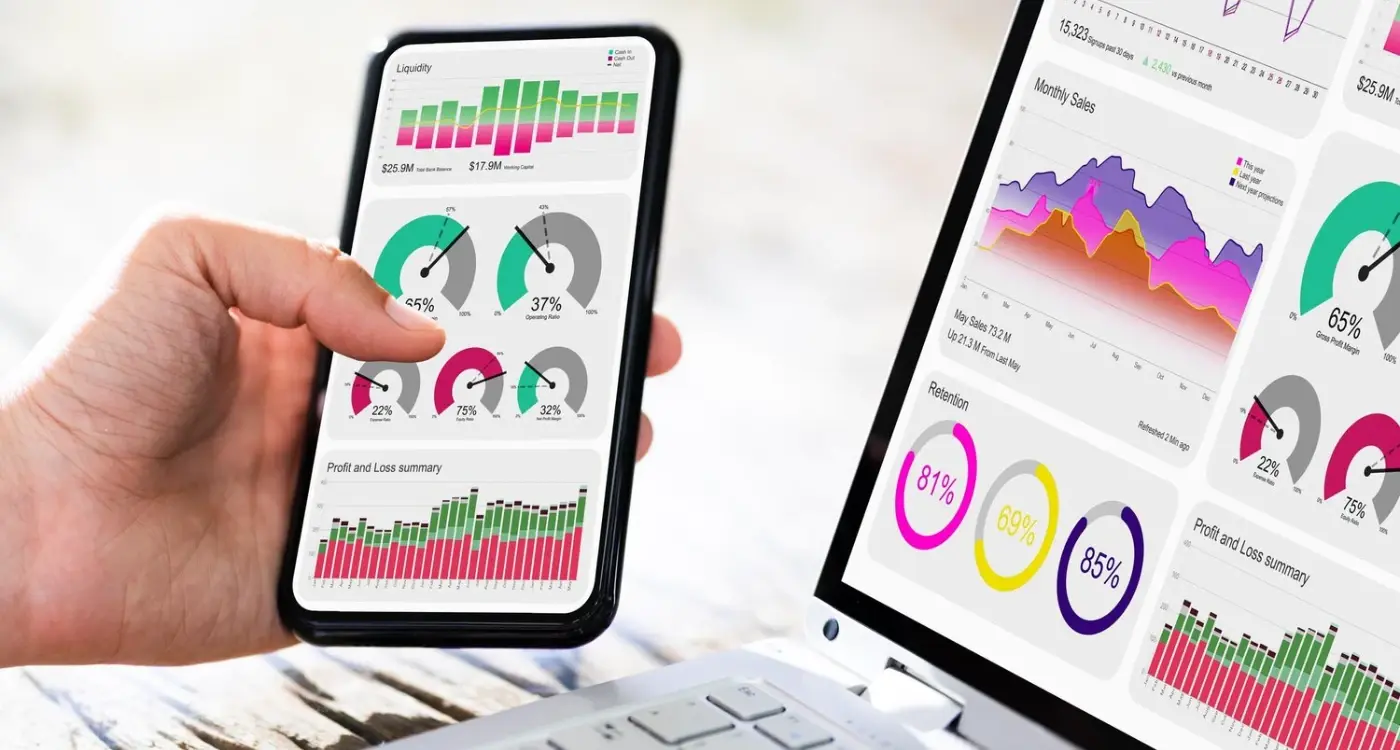Which Languages Should I Prioritise For My App's International Launch?
You've built an amazing mobile app. Your local users love it, downloads are steady, and you're starting to think bigger. But then reality hits—where do you even begin with an international launch? Which languages should you tackle first? Spanish because it's spoken by millions? Mandarin because China's market is huge? Or maybe German because Europeans have spending power?
I've worked with countless developers who get completely overwhelmed at this stage. They either try to launch everywhere at once (and burn through their budget) or pick languages randomly based on gut feelings rather than data. Both approaches usually end in disappointment.
The difference between a successful international launch and a costly mistake often comes down to choosing the right languages in the right order
This guide will walk you through the exact process we use at Glance to help our clients make smart language choices for their mobile app international launch. We'll cover everything from identifying your most profitable markets to understanding the technical challenges of multi-language apps. No guesswork, no expensive mistakes—just a clear roadmap that'll help you expand globally without breaking the bank or losing your sanity.
Why Language Choice Matters for Your App's Success Abroad
I've watched brilliant apps fail spectacularly overseas simply because the developers thought English would be enough. That's like opening a shop in Paris and expecting everyone to speak your language—it just doesn't work that way. Your app might be amazing, but if users can't understand what it does or how to use it, they'll delete it faster than you can say "international expansion".
The numbers don't lie here. Apps that speak to users in their native language see download rates that are 128% higher than English-only versions. That's not a small difference—that's the difference between success and failure. When someone opens your app and sees familiar words, they immediately feel more comfortable and confident using it.
Language Creates Trust
Think about how you feel when you land on a website that's poorly translated or still showing foreign text. You probably leave straight away, right? Your app users behave exactly the same way. They want to know that you've made an effort to understand their culture and speak their language properly.
Getting the language right isn't just about translation either—it's about making your app feel like it belongs in that market. Local phrases, cultural references, and even the way you structure sentences can make the difference between an app that feels foreign and one that feels like home.
Understanding Your Target Markets and User Behaviour
I've seen too many apps fail their international launch because the team made assumptions about their users rather than doing proper research. You might think your app will work everywhere, but user behaviour changes dramatically from country to country—and I mean dramatically.
Start by looking at your current user data if you have any. Where are people already downloading your app? What countries show the highest engagement rates? These early adopters often give you clues about where to expand next. But don't stop there—dig deeper into how people actually use their phones in different regions.
Key Research Areas
When I'm helping clients plan their international launch, we focus on these core areas:
- Device preferences and operating system market share
- Internet connectivity and data costs
- Payment methods and purchasing habits
- Cultural attitudes towards privacy and data sharing
- Local competitors and market saturation
- App store ranking factors in different regions
The data might surprise you. In some markets, people prefer lightweight apps because of slower internet speeds or expensive data plans. In others, users expect rich multimedia experiences. Payment preferences vary wildly too—what works in the UK might be completely wrong for Southeast Asia.
Use Google Analytics, App Store Connect, and local market research reports to understand user behaviour patterns before choosing your target languages. Don't rely on population size alone.
The Big Five Languages That Open Most Doors
When you're planning your app's international launch, five languages stand out as absolute must-haves. These aren't just my personal favourites—they're backed by solid user numbers and market reach that can make or break your global success.
English sits at the top, obviously. It's the internet's lingua franca and opens doors to major markets like the US, UK, Australia, and Canada. But here's what many people miss: English also works as a fallback language in countries where localisation isn't perfect yet.
The Economic Powerhouses
Spanish comes next, covering over 500 million speakers across Spain, Latin America, and growing US Hispanic markets. The spending power here is massive and often underestimated. Chinese (Mandarin) is non-negotiable if you want access to the world's largest mobile market—we're talking about 1.4 billion potential users with increasing disposable income.
French opens up not just France, but francophone Africa, Canada, and parts of Europe. The purchasing power in these markets is substantial. Japanese rounds out the big five; whilst the population is smaller, Japanese users have some of the highest app spending rates globally.
Smart Sequencing
Start with English and Spanish—they give you the biggest bang for your buck. Then add Chinese if your app concept works in that market. French and Japanese can follow based on your specific user data and revenue goals.
Regional Powerhouses You Shouldn't Ignore
After covering the big five languages, let's talk about some regional champions that could make or break your app's success in specific markets. These aren't global giants, but they're absolute must-haves if you're serious about certain regions.
European Markets Worth Your Attention
German opens doors to one of Europe's strongest economies—and I'm not just talking about Germany itself. Austria and parts of Switzerland use German too, giving you access to users with serious spending power. Dutch might seem niche, but the Netherlands has incredibly high smartphone adoption rates and users who aren't afraid to spend money on apps.
The Asian Opportunity
Korean is where things get interesting for app developers. South Korea has some of the world's fastest internet speeds and most tech-savvy users. They download apps like nobody's business and actually pay for premium features. Thai and Vietnamese are growing rapidly as their middle classes expand—early entry here could give you a massive advantage.
The biggest mistake I see developers make is assuming English will be enough in countries where it's widely spoken as a second language. Users always prefer their native tongue when they're spending money.
Don't sleep on these regional players. They might not have the global reach of English or Spanish, but they can deliver exactly the engaged, profitable users you need for sustainable growth. Before you commit to any regional market, it's worth understanding whether you need to register your app business in each country you're targeting.
Technical Considerations for Multi-Language Apps
Getting your app ready for multiple languages involves more than just translating text—and I've learnt this the hard way over the years! The technical side can make or break your international launch if you don't plan properly from the start.
Text Expansion and Layout Challenges
Different languages take up different amounts of space on screen. German words can be much longer than English ones, whilst Chinese characters might be more compact. Your app's design needs to handle this gracefully without breaking the layout or making buttons disappear. I always tell clients to build their apps with flexible layouts that can grow and shrink as needed.
Right-to-Left Languages and Special Characters
Languages like Arabic and Hebrew read from right to left, which means your entire app interface needs to flip. Buttons, menus, and navigation all need to work in reverse. Then there are special characters—accents, umlauts, and symbols that need to display correctly across all devices.
Your development team will need to use Unicode encoding and test thoroughly on different devices. Don't forget about app store descriptions, push notifications, and any text that appears outside the main app interface. These technical details might seem small, but they're what separate professional international apps from amateur attempts.
Budget Planning and Phased Rollout Strategies
Let me be honest with you—going international with your mobile app isn't cheap. I've watched countless clients get starry-eyed about global expansion only to realise they've blown their entire budget on translating into twelve languages simultaneously. That's not smart business; that's wishful thinking.
The secret sauce here is phased rollouts. Start with two or three languages maximum for your international launch. Test the waters, see what works, then expand gradually. Your budget will thank you, and you'll actually learn something useful about each market rather than spreading yourself too thin.
Smart Budget Allocation
Plan to spend roughly 15-20% of your total development budget on each additional language. That covers translation, localisation, testing, and market-specific adjustments. Don't forget ongoing costs either—app store optimisation, customer support, and content updates all multiply with each new language. If you're planning to support multiple payment methods, you'll also need to consider handling different currencies and payment methods for each market.
The Three-Phase Approach
Phase one: Launch in your primary target language alongside English. Phase two: Add your next biggest market opportunity after six months of solid data. Phase three: Expand to regional languages once you've proven the model works. This approach lets you learn from real users, refine your international strategy, and most importantly—stay profitable throughout the process.
Always keep 30% of your internationalisation budget in reserve for unexpected market opportunities or technical challenges that pop up during rollout.
Testing and Optimising Your International App Experience
Getting your app translated is just the beginning—the real work starts when you begin testing it with actual users from different countries. I've watched countless apps launch internationally only to discover that what works perfectly in English falls flat in other languages. Sometimes it's obvious issues like text that doesn't fit properly in buttons, but more often it's subtle cultural preferences that can make or break your user experience.
Start by running your app through its paces in each target language before you even think about launching. Check that all text displays correctly, buttons still work when labels are longer, and that your app flows naturally. German words tend to be much longer than English ones, which can wreak havoc with your carefully designed interface.
Key Testing Areas That Matter Most
User testing with native speakers is worth its weight in gold. They'll spot issues you'd never notice—like culturally inappropriate imagery or confusing navigation patterns. I always recommend testing with at least five users per target market; you'll be amazed what they uncover. Understanding user testing costs upfront will help you budget for this crucial step.
- Interface layout and text overflow in different languages
- Cultural appropriateness of colours, images, and icons
- Payment methods and currency display
- Date and time formatting preferences
- App store screenshots and descriptions in local languages
Don't forget to monitor your app's performance after launch. User reviews in different markets will tell you exactly what needs fixing, and app analytics will show you where users are dropping off in each region. When submitting to international app stores, make sure you understand the difference between primary and secondary app categories to maximise your visibility in each market.
Conclusion
Planning your mobile app's international launch comes down to making smart choices about which languages to prioritise—and I've seen too many companies get this wrong over the years. The temptation is always there to go big straight away, but the most successful international launches I've worked on have been the ones that started focused and expanded thoughtfully.
Your target markets should drive your language decisions, not the other way around. Spanish might open doors to 500 million speakers, but if your app solves a problem that's only relevant in Nordic countries, then Swedish or Norwegian might be far more valuable. The big five languages—English, Spanish, Chinese, Hindi, and Arabic—are powerful starting points, but don't ignore regional powerhouses like German in Europe or Portuguese in South America.
Budget planning is where reality meets ambition. A phased rollout isn't just cheaper; it's smarter. You can learn from each market, refine your approach, and avoid costly mistakes that would be much harder to fix across ten languages simultaneously. Testing and optimising your international app experience will teach you things about your users that you never expected.
The languages you choose today will shape your app's global future—choose them wisely, and your international launch will have every chance of success.
Share this
Subscribe To Our Learning Centre
You May Also Like
These Related Guides

Should My App Launch Include a Referral Programme?

How Many App Features Should I Promote at Launch?



